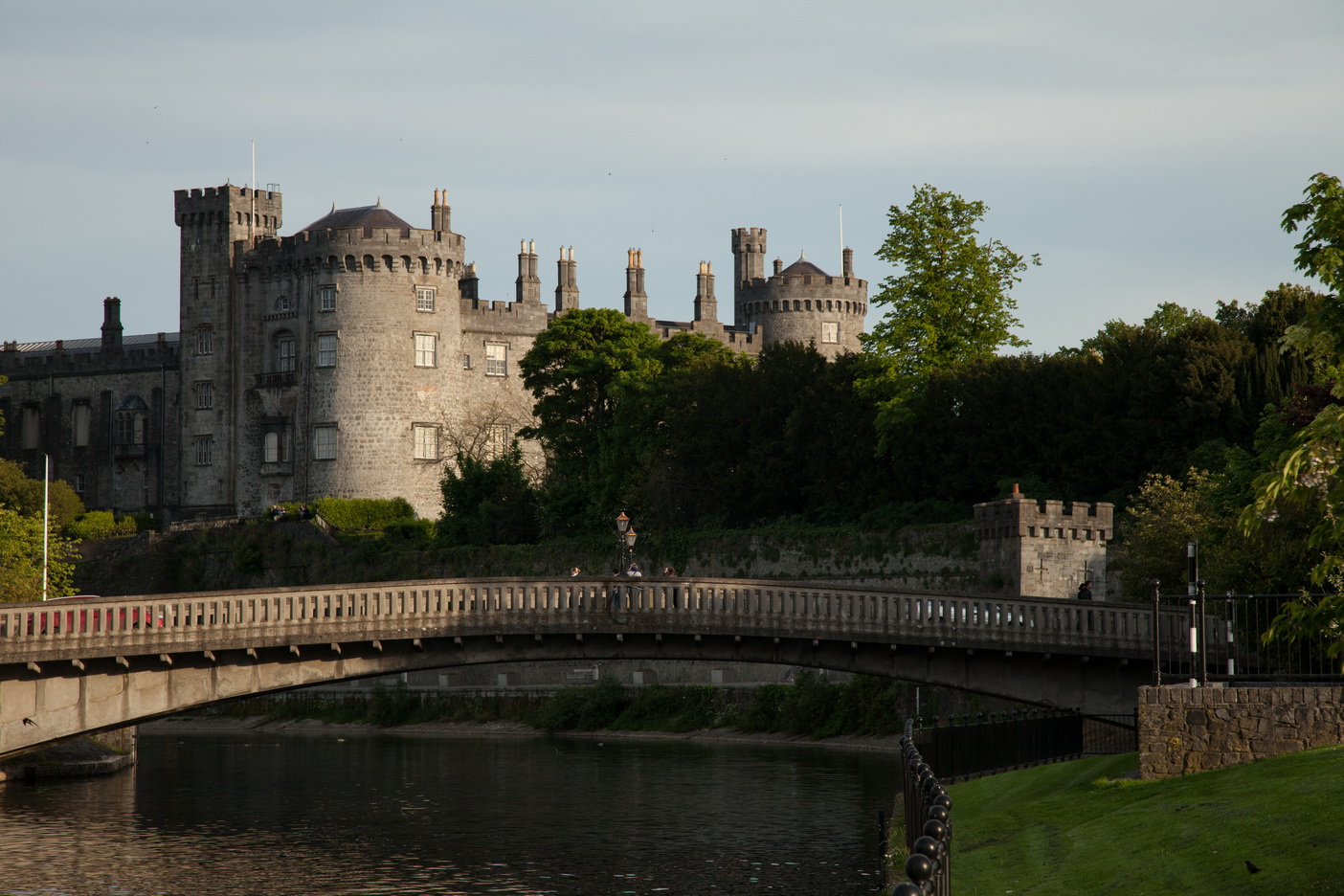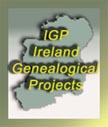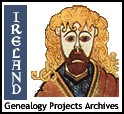Kilkenny is the anglicised version
of the Irish "Cill Chainnigh", meaning Church (Cell) of Cainneach or
Canice. This probably relates to the church and round tower, now St.
Canice's Cathedral, which was built in honour of St. Canice. Kilkenny
became one of the counties of Leinster in 1210, but it had been a place
of importance for centuries before. The county was based on the
historic Gaelic kingdom of Ossory (Osraighe), which was co-terminus
with the Diocese of Ossory.
The
Kingdom of Osraige was one of the ancient Kingdoms of Ireland. The
Kings of Osraige, the Mac Giolla Phádraig family, reigned over Osraige
and Cill Chainnigh was their stronghold. The Kingdom of Ossory existed
from at least the 2nd century until the 13th century AD. The current
ecclesiastical dioceses of that area is still known as Ossory. The
medieval Diocese of Ossory and was established in 549 AD, and its
territory corresponded to the medieval Kingdom of Ossory. In historic
times, Kilkenny replaced Aghaboe as the chief church in Osraige.
The kingdom was bounded by two of the Three Sisters the rivers Barrow
and Suir and the northern limit was, generally, the Slieve Bloom
Mountains. The Osraige —their name means people of the deer— inhabited
much of modern County Kilkenny and parts of neighbouring County Laois.
To the west and south, Osraige was bounded by the River Suir, to the
east the watershed of the River Barrow marked the boundary with
Leinster, and to the north it extended into and beyond the Slieve Bloom
Mountains. The River Nore ran through the Kingdom.
Osraige formed the easternmost part of the kingdom and province of
Munster until the middle of the 9th century, after which it was
attached to Leinster. Osraige was largely a buffer state between
Leinster and Munster. Its most significant neighbours were the Loígsi,
Uí Cheinnselaig and Uí Baircche of Leinster to the north and east and
the Déisi Muman, Eóganacht Chaisil and Éile of Munster to the south and
west.
The name Osraige is said to be from the Usdaie, a Celtic tribe that
Ptolemy's map of Ireland places in roughly the same area that Osraige
would later occupy. The territory indicated by Ptolemy probably
included the major late Iron Age hill-fort at Freestone Hill which
produced some Roman finds. Also the interesting burial at Stoneyford
which is of typical Roman type and probably dates to the 1st century
AD.[43] The Osraighe themselves claimed to be descended from the Érainn
people. Others propose that the Ivernic groups included the Osraige of
the Kingdom of Osraige/Ossory.[44] The Brigantes were the only Celtic
tribe to have a presence in both England and Ireland, in the latter of
which they could be found around Kilkenny, Wexford and Waterford.
Pope Adrian IV gave Norman King Henry II of England permission to claim
Ireland 1154. The Cisternians came to Jerpoint and Kilkenny around
1155/60. Jerpoint Abbey is founded by Donal MacGiollaPhadruig, King of
Ossory 1158. In 1168, Dermot MacMurrough the King of Leinster was
driven out of his kingdom by Rory O'Connor the High King of Ireland
with the help of Tiernan O'Rourke. MacMurrough looked for help from
Henry II and got help from a Cambro-Norman lord notable Richard de
Clare, 2nd Earl of Pembroke, known to history as Strongbow. MacMurrough
secured the services of Richard, promising him the hand of his daughter
Aoife of Leinster and the succession to Leinster. Richard and other
Marcher barons and knights by King Henry assembled an army. The army,
under Raymond le Gros, took Wexford, Waterford and Dublin in 1169 and
1170, and Strongbow joined them in August 1170. The day after the
capture of Waterford, he married MacMorrough's daughter, Aoife.
The
Lordship of Ireland was a lordship created in the wake of the Norman
invasion of Ireland in 1169–71. Kilkenny formed part of the lordship of
Leinster. Strongbow became Lord of Leinster in 1171.The Kilkenny Castle (Irish:
Caisleán Chill Chainnigh) was built in 1195 to control a fording-point
of the River Nore and the junction of several routeways. It was a
symbol of Norman occupation and in its original thirteenth-century
condition it would have formed an important element of the defences of
the town with four large circular corner towers and a massive ditch,
part of which can still be seen today on the Parade. (Wikipedia - County Kilkenny)
|



